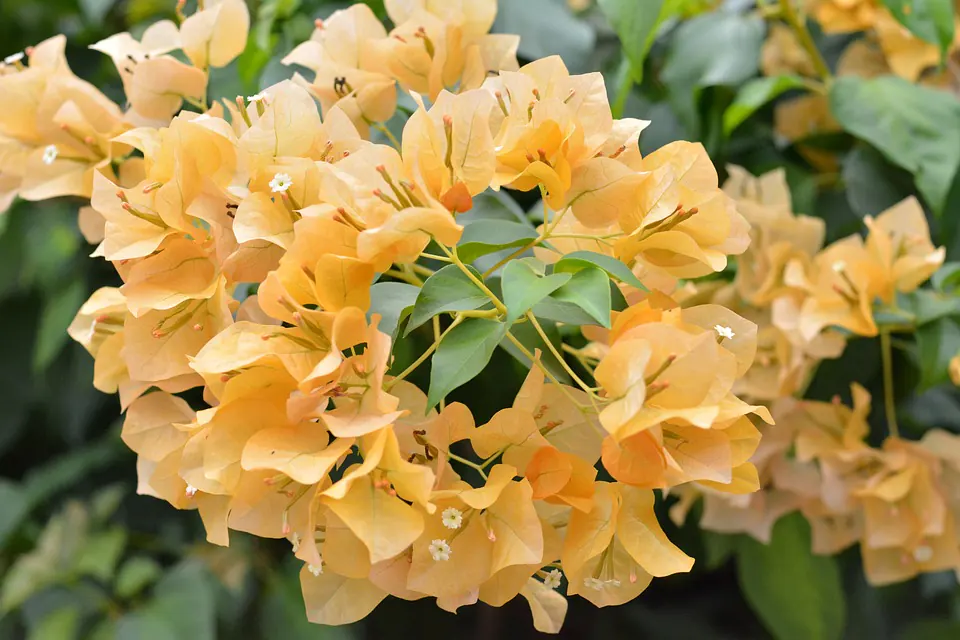How Do You Treat Bougainvillea Root Rot?
Root rot is a condition that plant lovers frequently learn to dread quickly. In no small part, this can be attributed to the unfortunate fact that this disease is often difficult to recognize until it has already progressed to an advanced stage, at which point it is much more difficult (if not outright impossible) to treat effectively. Left without treatment, any infected plant will eventually be killed by this sickness.
How Can You Identify Root Rot?
As the name suggests, the primary symptom of root rot is that it causes a plant’s roots to decay. As you might imagine, this is part of why the condition is so difficult to catch before it reaches an advanced stage—the part of the bougainvillea the disease most strongly affects isn’t easily visible.
Compounding this problem is the fact that root rot can easily be confused with several other common plant health concerns, such as a nutrient deficiency or underwatering. However, it is possible to correctly diagnose root rot as long as you are familiar with the symptoms, which may include:
- Wilting or drooping leaves
- Yellowing or blackened leaves
- Slower growth rates
- Soil and/or roots smelling of rot
- Delayed blooming
- Loss of leaves
- Discolored roots (healthy roots should be white and firm)
- Mushy roots and/or leaves
- Fungus gnats living in the soil around your plant
By the time the disease has progressed to the point that the bougainvillea’s leaves are noticeably affected, the plant may be beyond saving. At the very least, symptoms affecting the leaves are a strong indicator that the affected plant is severely ill.
How Can You Prevent Root Rot?
If you want to avoid the onset of root rot, we would advise you to familiarize yourself with the most common causes of the condition. After all, once you know the most likely causes, you can take steps to prevent them. Most of the reasons for root rot are easy to remedy once you identify them as possible problems.
Avoid Overwatering
Overwatering is one of the most common causes of root rot in any plant. Many varieties of fungus prefer to inhabit damp conditions, including the types of fungus that can cause root rot. Among the most common of these are Pythium, Rhizoctonia, and Phytophthora.
However, bougainvilleas tend to run an increased risk of root rot caused by overwatering than most plants, owing to their relatively low water needs. It means that one of the best ways to avoid root rot is to ensure that you don’t overwater your bougainvillea.
Unfortunately, this can be tricky to do, especially for inexperienced gardeners. A good test to determine whether a plant has been well watered or not is to dig down into the earth close to (but not in) the plant’s root zone. Doing this should ensure that you will be far enough from the roots to avoid damaging them while still close enough to see them.
Ideally, the soil this close to the roots should be consistently moist throughout. If the earth is dried out, then you aren’t watering enough. If the soil is soggy, however, the bougainvillea is suffering from overwatering.
Be Careful About Contagion
Root rot is capable of spreading from one plant to another. Not only are the fungal spores airborne and thus able to naturally spread on their own, but you can even accidentally spread the disease yourself if you use infected bonsai tools on a healthy bonsai.
Insects may also spread the disease to healthy bougainvilleas. While a potted plant is not in as much danger of contagion as a garden plant is, both do face this risk. Make sure to take steps to protect any other plants you have if your bonsai develops root rot.
Ensure Good Drainage
Poor drainage is another common cause of root rot. This can be caused by slow-draining soil (such as heavy clay) or by insufficient drainage holes. In either case, your bonsai’s container will end up retaining too much water. Eventually, this will lead to the same result as overwatering—a healthy fungus and a very sick bonsai.
Escaping this potential cause is simple. It’s critically important to select an appropriate substrate for your bonsai. Bougainvilleas typically do well with well-drained loamy soil mixed with organic matter. You want something marked as “quick draining.” Beyond that, you just need to make sure that your bougainvillea is kept in a container that has enough drainage holes for the plant. A bougainvillea needs to be fully drained after watering.
How Can You Treat Root Rot?
If the worst happens, and you find yourself dealing with a bougainvillea that has contracted root rot, don’t panic. There are some methods of treatment available. You have a decent chance of saving the plant if you caught it early enough.
To treat a minor root rot case, you’ll need to dig the plant up. This gives you free access to the ill bougainvillea’s roots. Your next step is to gently but thoroughly wash the roots. Once the roots are no longer coated in dirt, you can begin carefully removing the infected portions of the roots. It is essential to use a sterilized cutting tool to perform this operation.
Once you have finished removing the diseased root sections, you should be similarly careful about cleaning the cutting tool a second time. Remember, you can infect healthy plants by using dirty tools. In the interests of being thorough, you also should re-pot the plant with clean uninfected soil.
In a more severe case, the entire root system is most likely infected. The safest course of action in such a scenario is probably to take cuttings from the healthy plant stem or leaves and try to propagate a new bougainvillea.







